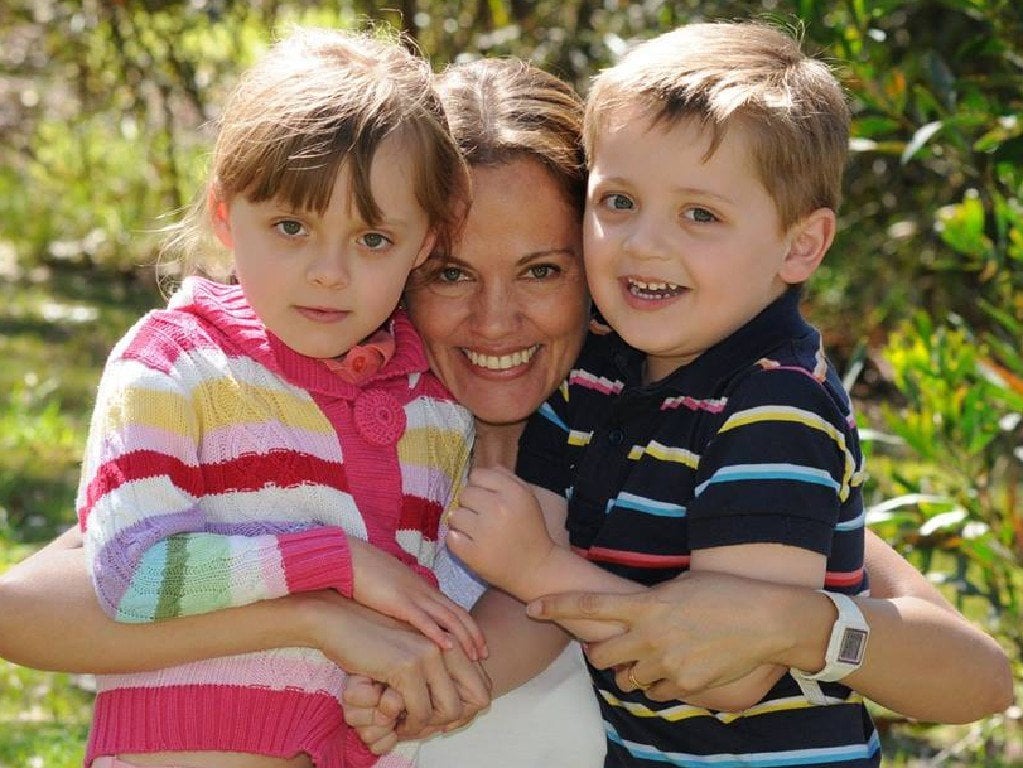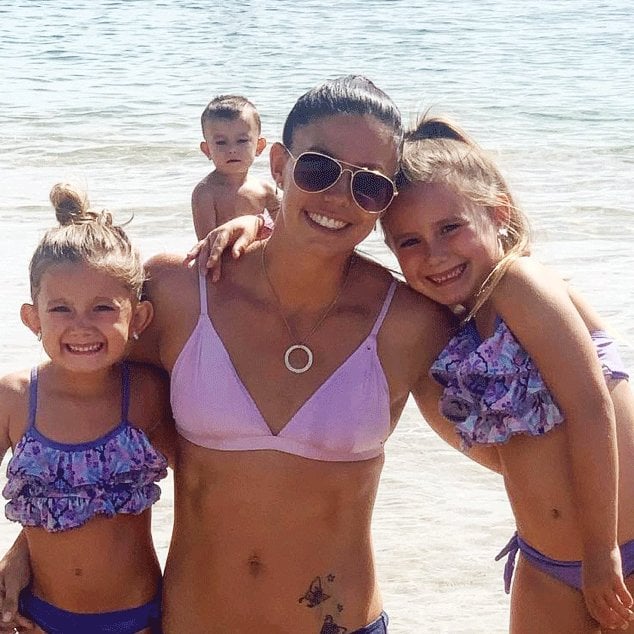Warning: This post deals with domestic violence and might be triggering for some readers.
One year ago today, the name Hannah Clarke was etched into Australia's consciousness.
The Brisbane woman's murder at the hands of her estranged husband represented another blow to our fragile national identity, to our collective delusion that things like that don't happen to people like her. Not in suburbs like Camp Hill, anyway.
As we mourned Hannah, as we raged and wrestled with the what-ifs, there were names many of us forgot: those of her three children.

Aaliyah, 6, Laianah, 4, and Trey, 3, were killed alongside Hannah when their father ambushed her car on the morning school run, set it alight, and then took his own life.
That particular crime was unique in many ways — how public it was, the perpetrator's methods, the volume of coverage it received, and so on. But at its core, it wasn't an anomaly.
On average, one Australian woman is killed by a current or former partner each week.
And according to a 2019 report by the Australian Institute of Criminology, approximately one Australian child is killed by their parent or step-parent every fortnight.
Yet while we are beginning to confront intimate partner violence and homicide as the national crisis that it is, when children are involved, it's almost as if we can't bear to look.
Dr Denise Buiten, a senior lecturer in sociology and social justice at The University of Notre Dame who specialises in gender and violence, argues it's about time we faced up to the painful reality.
"We think of domestic violence as an issue for women," she told Mamamia. "And it is. But it's more than that.
"We forget children are there and that violence against them is intertwined with violence against women."
The monster myth, and the reality about people who kill their children.
The 2019 AIC report is the most comprehensive picture of filicide — the murder of a child by a parent — ever compiled in Australia.
Produced in partnership with the Monash-Deakin Universities Filicide Research Hub, it charted the 284 children who were killed by their mother, father or step-parent between 2000 and 2012.
It found that babies under 12 months were most at risk; that only one in three victims were known to child-protective services; and that the most common causes of death overall were beating (25 per cent), strangulation or suffocation (14 per cent), followed by stab wounds (10 per cent).
When forced to confront crimes like these, often our way of comprehending them is to slot those responsible into neat boxes.
A mental illness diagnosis, for example, is often harmfully bandied about as if it explains the crime (further stigmatising such illnesses and the people that live with them).
Words like "monster" are used often, too. That seems to help us distance ourselves from the person, to comfort us with the assumption that we'd be able to recognise such a wicked individual if they were in our own lives.
It's perhaps why the handful of stories that best fit those narratives tend to cut through.
Media reports about the man who took the lives of Hannah, Aaliyah, Laianah and Trey were heavy with phrases like "evil killer", "evil father".
And in the case of the murder of the Perinovic children, Claire, 7, Anna, 5, and Matthew, 3, by their mother in January 2021, media coverage focused largely on the woman's "mental health battle".
But the reality of who commits filicide, and why, is far more complicated.
Filicide is perpetrated by men and women in roughly equal numbers. But the nature of their crimes and the motivation behind them is different.
These are some of key things the AIC report and established research tells us about...
"It's a totally different set of patterns," Dr Buiten said.
"Not that it makes any of it any better, but there are differences in the causes."
Why parents kill their children.
While there is surprisingly little research into these crimes, it's broadly argued that they are driven by gender.
As Dr Buiten puts it, "filicide-suicide is often tied to what we think men and women are supposed to be."
Of course, individual circumstances — particularly separation, financial hardships, and mental illness — come into play as risk factors. But they too, are often steeped in a sense of loss of control as a mother or father.
"[Parents who kill often seem to think] 'If I can't provide for my family and keep it intact, then my child's life isn't worth living,'" she said.
"An investment in the ideal nuclear family seems to be lodged in there."
Familicide cases, in particular, often occur in the context of the father losing control of his perceived status as 'head of the household' and 'provider'.
Research points to the fact that men are almost exclusively responsible for familicide as a symptom of their proprietary attitudes about their partner and children; the entire family unit. Women's, meanwhile, are often only over their children.
Either way, children are property. Powerless.
"In many cases of both men and women killing their children, there's an assumed right to decide on the children's behalf whether their life is going to be manageable and whether it will therefore be worth living," De Buiten said.
"There is often a very gendered, narrow idea about what makes someone's life worthwhile."
The perpetrators seem unable to consider their children as individuals.
And in discussing these crimes, we as media often do the same...
Children become silent victims.
If there's a legacy of the Camp Hill crime, it's that it started a national discussion about the intricacies of domestic abuse, how it's not always characterised by bruises and broken bones.
As the background of Hannah Clarke's former relationship emerged through the media and via friends and loved ones, it became clear the perpetrator had exercised something called coercive control: a pattern of manipulative behaviours including psychological, financial and abuse.
Dr Buiten observed a "big jump" in news reports about coercive control in the wake of the case.
But again, the children's experience of that was rarely central to the discussion.
"It doesn't mean they don't receive sympathetic coverage. But I think there's more to it than being sympathetic," Dr Buiten said. "Children are often framed as objects. Beautiful, innocent objects, but objects nonetheless."
"I think a lot about the abuse by their father those children would likely have faced, indirectly, leading up to their deaths," Dr Buiten said. "I think we haven't talked much about that.
"The research is very clear. Coercive control very much ropes children in and affects them quite significantly."
Perhaps we're reluctant to talk about what they endured in their life because that would mean having to truly confront their deaths.
As one of the authors of the AIC report, Emeritus Professor Thea Brown of Monash University has said, filicide is a taboo in the way that suicide once was.
"There’s a sense that it’s too hard and too confronting to deal with.
"Details of the children’s deaths can be very confronting. But it is necessary to understand it."
Necessary for Aaliyah, for Laianah, for Trey, and for the dozens of other children just like them.
If this post brings up any issues for you, or if you just feel like you need to speak to someone, please call 1800 RESPECT (1800 737 732) – the national sexual assault, domestic and family violence counselling service. It doesn’t matter where you live, they will take your call and, if need be, refer you to a service closer to home.
Want more Mamamia? You can subscribe to a range of our newsletters here.
Feature image: Facebook/Mamamia



